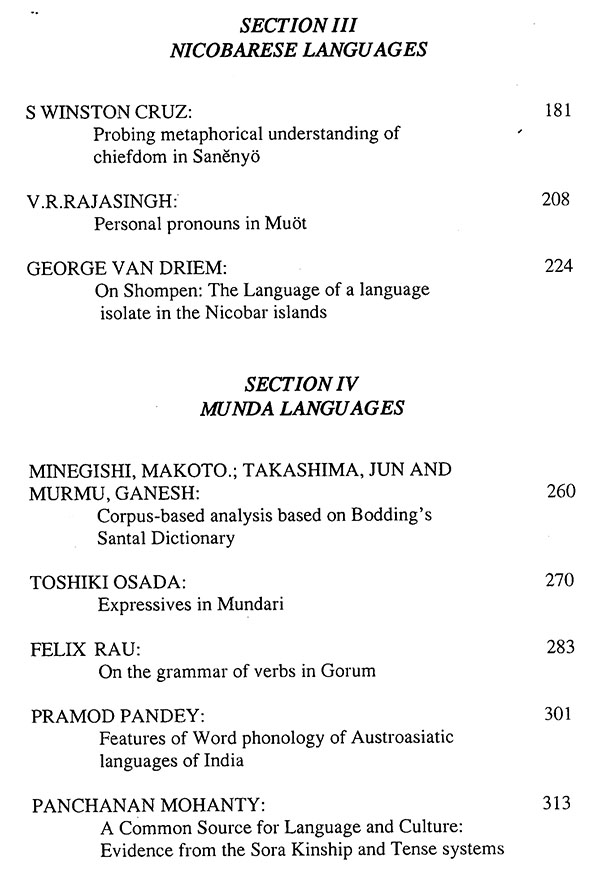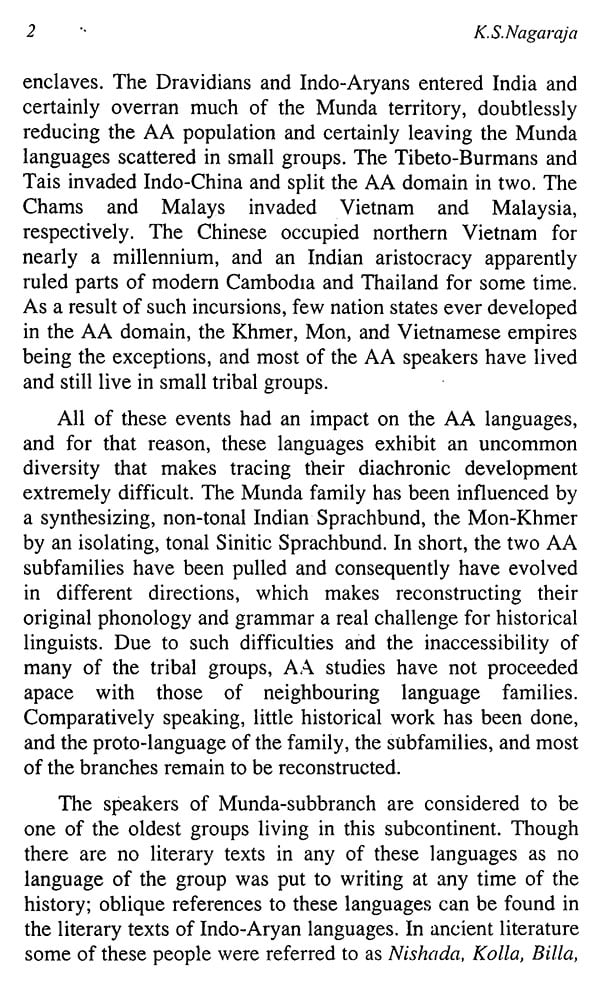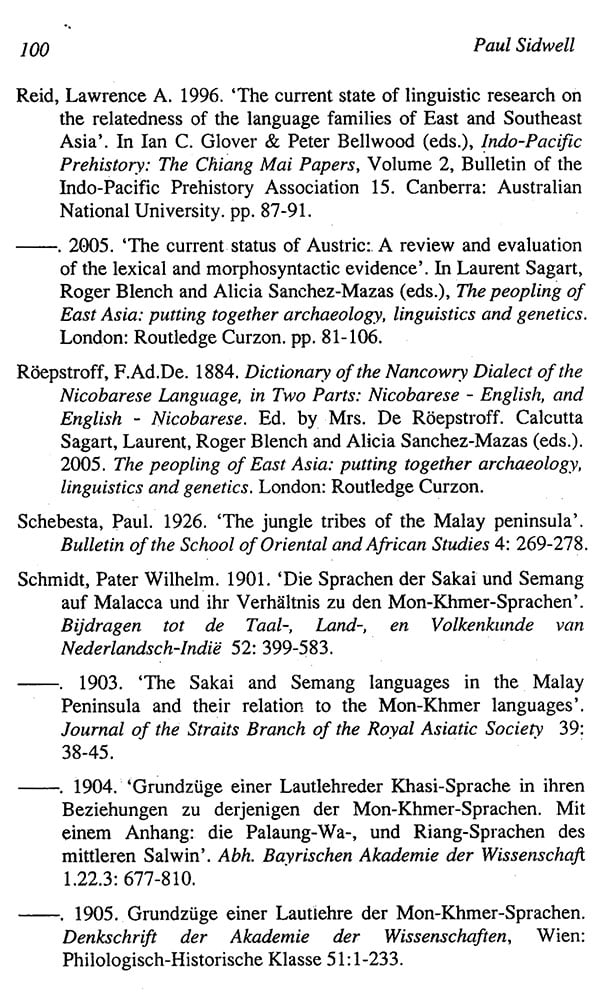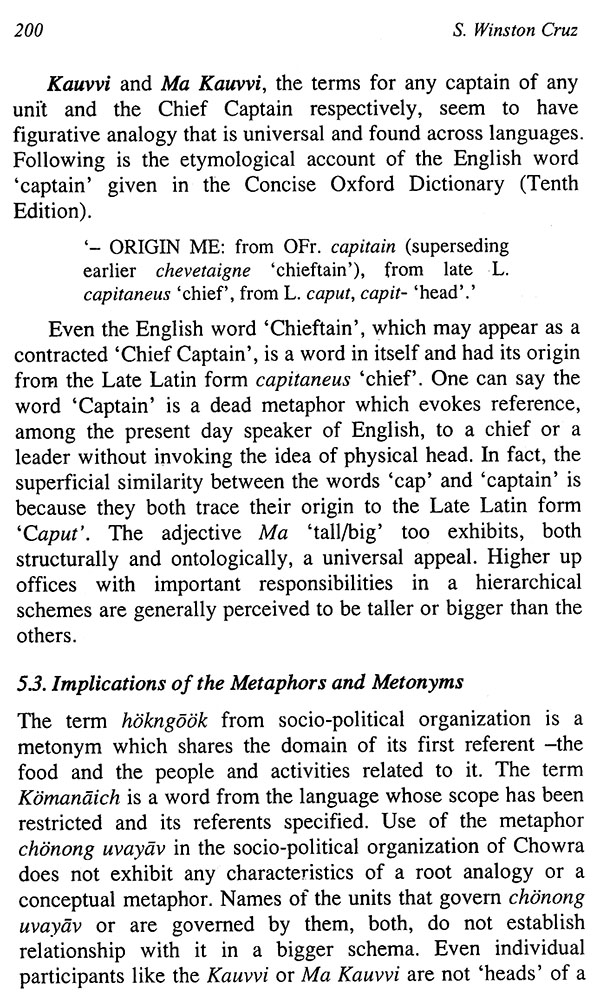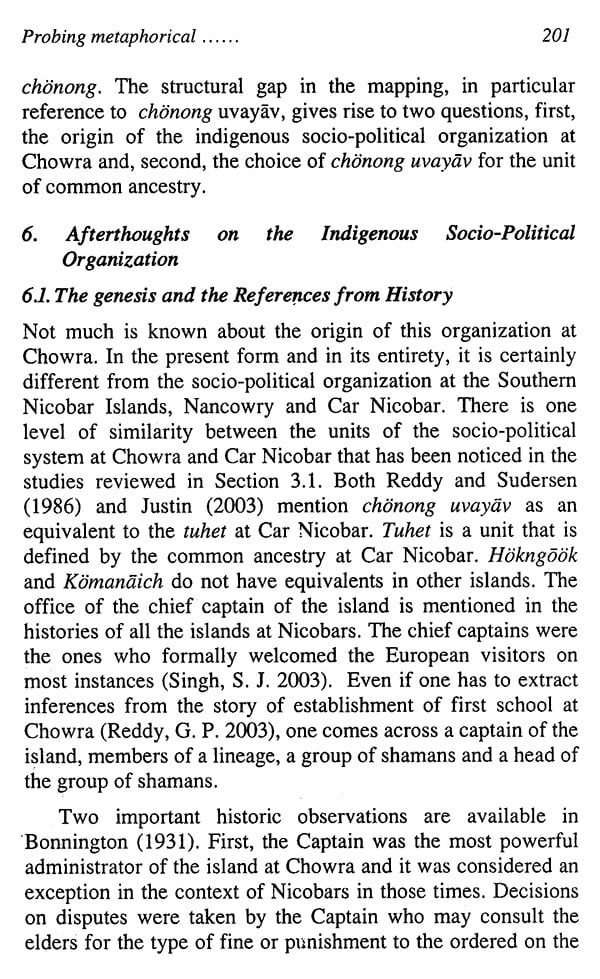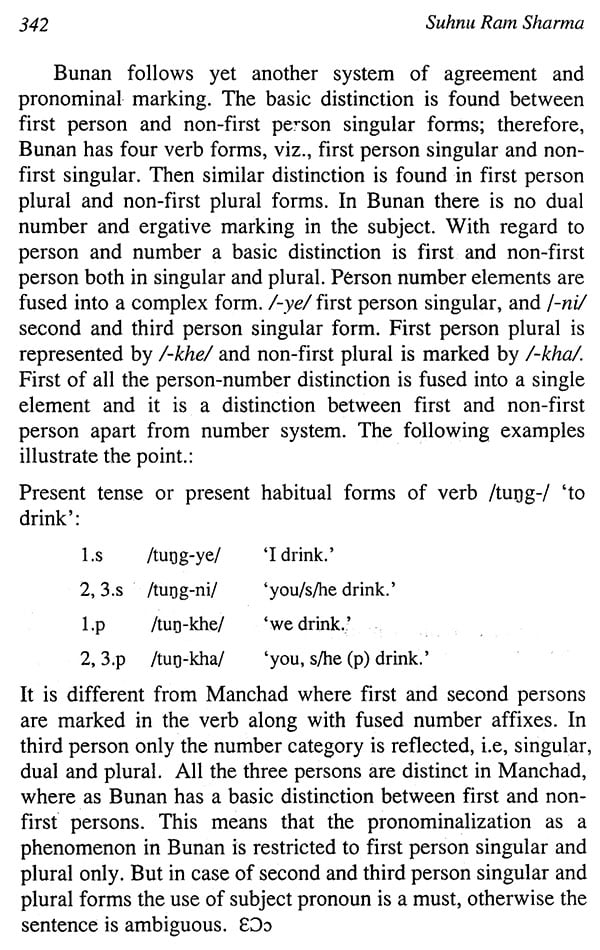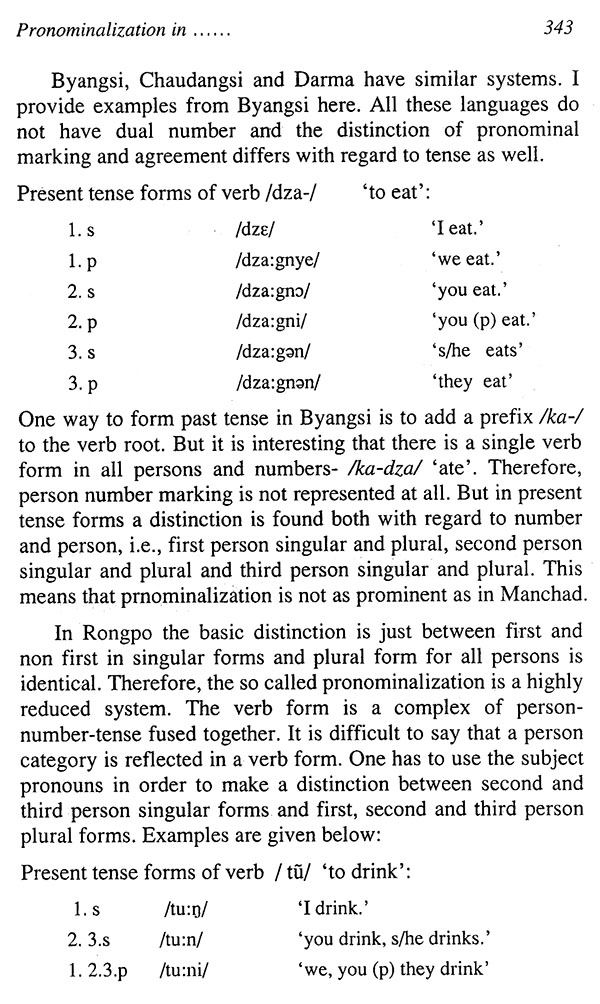
Austroasiatic Linguistics
Book Specification
| Item Code: | NAX313 |
| Author: | K.S. Nagaraja and Kashyap Mankodi |
| Publisher: | Central Institute Of Indian Languages, Mysore |
| Language: | English |
| Edition: | 2010 |
| ISBN: | 8173421749 |
| Pages: | 352 |
| Cover: | HARDCOVER |
| Other Details | 9.00 X 6.00 inch |
| Weight | 450 gm |
Book Description
As per the 2001 Census, Austro-Asiatic language family, with a total population of 11,442,029, comprising 1.11% of India’s population, is a store house of over 11% of the nation’s linguistic diversity, for it has 14 of 122 languages with 21 of the 234 mother tongues (the total number of mother tongues for all families listed in the Census spoken by over 10,000). However, it does have several other mother tongues which are returned but not listed as per Census policy as they are below 10,000, which are of no less importance to us linguists. The spread of languages reveals that their natural habitat 1s predominantly central India with Khasi as the lone member in Northeast, but with linguists making out a case for the Nicobarese as a member of the family, it is also spread across the seas and has disjuncted distribution.
Santali is the sole representative of the Austro-Asiatic family in the list of 22 languages included in the eighth schedule. All the languages are tribal languages for they belong to the Adivasis who have links that are from times immemorial. These languages are primarily ‘spoken’ with Santali alone having literary records of substance, which too are often less than 100 years old and in different scripts too. Yet there is no denying that the speakers of these languages have been a most integrative lot for they have allowed their expression systems to be shaped by their ecology where other language families- Indo-Aryan and Dravidian in particular in central India- have converged with them and contributed most to the formation of India as a linguistic area with grassroots multilingualism.
Documentation, Description and Development go together in language work and for nurturing diversity these are the key components of language planning. Each variety is a unique record of its ancestry, cultural moorings and social history, besides being a unique window in to the functioning of the human mind. Austro-Asiatic languages are under described, partially documented and least developed languages which must *receive all attention. The conference proceedings of the meet held a few years back at Deccan College, Pune should prove invaluable to those looking to strengthen the study of these languages. I am sure my friend and colleague Elangaiyan would have liked to bring out these proceedings under his own watchful eye, but fate has ordained it otherwise. I fondly recollect all the warm hearted discussions we have had in the past and I am particularly grateful that Nagaraja and Kashyap have put the manuscript together as a memorial volume. I also hope the work of Elangaiyan —a language missionary with compassion-had begun with the Nicobarese language will also see the light of day some time in the future and our Institute would remain ever supportive in that endeavour. I also hope we will strive on to do more for these languages. Santali is being linked to the National Translation Mission to produce modernized discourses in various disciplines and it is also linked to the language technology unit. Khasi too is taking rapid strides in Meghalaya where it is an associate official language. The Sarva Shiksha Abhyan is creating new opportunities for languages like Mundari or Kharia and the Nicobarese primers prepared by our Institute have already become useful in schools. The work that awaits us 1s of course a lot more and we should strive on...and on....

